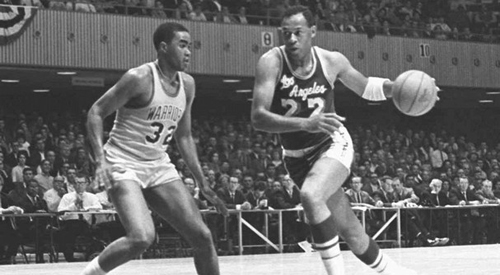
The NBA’s dynasty victims list
When LeBron James made “the decision” to join Dwyane Wade and Chris Bosh in Miami last summer, talk of the NBA’s next great dynasty was thrown about in abundance. Lost in the shuffle of all the drama, however, is what exactly that means, both for Miami and the rest of the league.
Though, as of Thursday, the Heat currently sit tied with the Dallas Mavericks in the 2011 NBA Finals, they’re still considered favorites for the championship this season. The first, potentially, in a long line of them.
Going forward, it’s reasonable to assume that with better team cohesion, possible free agent signings and smart drafting, the franchise is only going to adjust and improve.
In the NBA, the number of championships won defines legacies. It’s in this regard that a burgeoning dynasty could pad James and Wade’s career portfolios when all is said and done. The greatest in the game have enough rings to cover each finger on one hand (Kareem Abdul-Jabaar – 6, Michael Jordan – 6, Magic Johnson – 5); and the greatest of the great can cover two (Bill Russell – 11).
Is it really out of the question for a 26-year-old James to flirt with such numbers?
With annual dominance teams can own entire decades. In the 1960s it was the Celtics, in the ’80s it was the Celtics and Lakers, the Bulls owned the ’90s and in the first decade of the 2000s the Lakers and Spurs claimed the majority of the rings.
Championship runs like these can leave behind a slew of other teams who fall short, like a trail of wreckage after a storm. Few eras, over the NBA’s illustrious history, have been without an elite group of predominant organizations.
[php snippet=1]
In the ’60s the big loser was pretty much anybody who wasn’t on the Boston Celtics, but specifically those players on the Los Angeles Lakers, and even more specifically Elgin Baylor.
Baylor was a part of Lakers teams that could easily call themselves the second best team of the 1960s, but like everything else second best it just comes up short. Baylor and Lakers lost to the Celtics in the NBA Finals seven times over a nine-year span from 1962-1969.
The ’70s may have been the only decade in which there has been consistent parity in the NBA. Seven different teams were crowned champions and many of the era’s greatest players were rewarded for their efforts, like Willis Reed, Walt Frazier, John Havlicek, Rick Barry, Bill Walton and Wes Unseld.
The ’80s were ruled overwhelmingly by the Lakers and Celtics, who essentially alternated championships until the Pistons put an end to it in 1989. Though they alone were stacked with Hall of Famers this decade, two of the NBA’s Top 50 players were denied championships as a result.
George Gervin, a legend whose career spanned two decades, never played for any truly great San Antonio Spurs teams, but in the early ’80s his teams were thwarted in the playoffs twice by the Lakers.
Dominque Wilkins’ one-man show of a team was simply no match for the Hall of Fame heavy Eastern Conference Celtics. Of the four 50-win seasons the Atlanta Hawks produced in the ’80s, two of them were stopped by Larry Bird and co.
In the ’90s Patrick Ewing’s career could have ended with some more shine had Michael Jordan not been around. In Ewing’s best years, his team was knocked out of the postseason by the Jordan-led Bulls four different times. During the two years in which his Knicks managed to survive the East and qualify for the Finals, Ewing was either outplayed by Hakeem Olajuwon (1994) or injured (1999).
It took the tandem of John Stockton and Karl Malone over 13 years to finally reach the NBA’s final series, only to be tossed aside by Jordan and the Bulls in ’97 and ’98.
Playing the prime years of his career in the Western Conference for the Phoenix Suns, Charles Barkley’s 1993 Finals appearance was the only one of his career. He lost in six, of course, to Jordan.
Barkley believed he was the best player in the world heading into those Finals, and against anyone else, he would have probably been right. He managed to average 27.3 points per game during the six-game series, but MJ put forth an NBA Finals record of 41.0.
In the most recent decade, only three teams beside the Lakers or Spurs won a title (Pistons ’04, Heat ’06, Celtics ’08), and it was the Lakers that the Pistons and Celtics beat to win their titles.
Steve Nash, a two-time MVP and no stranger to deeply-successful teams was on the losing end of three series to the Spurs alone, all in a span of four years from 2005-08. Nash, naturally, remains ringless today as he slips into the twilight of his career.
In the current 2011 series now knotted at two games apiece, two sure-fire Hall of Famers – Jason Kidd and Dirk Nowitzki – are searching for their first. Kidd had chances in ’02 and ’03, but took his turns losing once each to the Lakers and San Antonio.
The power of a dynasty can have its ripple effects on many other careers. Young players currently calling the East home could very well see their careers flash by before ever having a chance to come out on top if the Heat continue down the path they’re expected to.
The window is closing for veterans whose careers have flown past under the shadows of Tim Duncan, Shaquille O’Neal and Kobe Bryant. If they hope to get their rings in before retirement – like Kidd and Nowitzki this spring – they’ll have to squeeze them in before James and the Heat get any better.
[php snippet=1]

